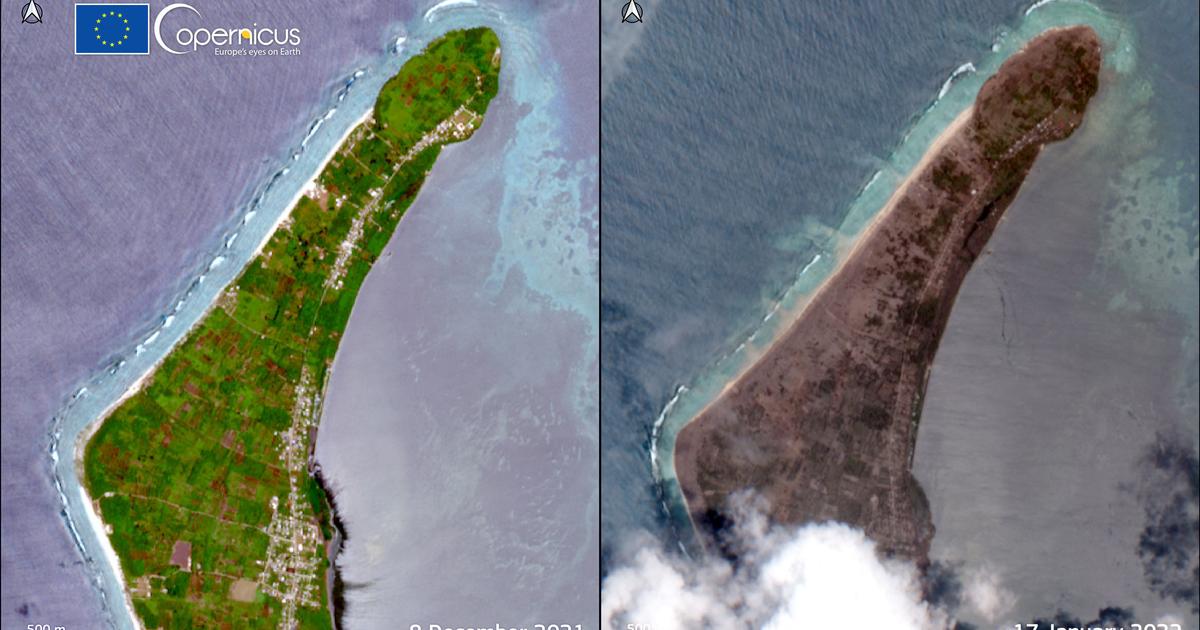Enlarge image
Dairy farm in Scotland: Agriculture is responsible for most of the methane emissions
Photo:
Martin Harvey / Getty Images
The most dangerous greenhouse gas is CO₂ because it is emitted in such high quantities.
But methane is also responsible for a large part of global warming.
The most important facts about this greenhouse gas at a glance:
What is methane
Methane is an odorless and colorless gas with the chemical formula CH4 - a methane molecule consists of one carbon atom (C) to which four hydrogen atoms (H) are bound.
How is methane created?
Methane is mainly formed when organic material is converted in the absence of oxygen.
This can happen in different ways - by rotting, rotting and digesting.
more on the subject
Fighting Global Warming: The Methane Problem - And How We Can Solve ItBy Marco Evers
For example, when microorganisms in the sediment under a lake, where no oxygen is available, decompose dead plants, a gas mixture of methane and carbon dioxide is created.
The largest natural methane sources are marshland and bog areas, but volcanic activities and thawing permafrost can also result in the release of methane.
Around two thirds of all methane emissions are not of natural origin, but are caused indirectly by humans: cattle breeding, the use of fossil fuels, landfills, rice cultivation and the burning of biomass - these are the world's largest methane sources, in descending order.
What do cattle have to do with methane?
Methane is produced in the stomachs of ruminants and is released into the atmosphere through belching and excretions.
Ruminants that are important for the global meat industry are sheep, but above all cattle.
A cow alone burps and farts up to 300 liters of methane into the outside world a day.
This is one of the reasons why the global increase in meat production is an important driver of global warming.
And what about the rice?
The second largest methane emissions in agriculture are caused by the wet cultivation of rice.
When the rice fields are flooded, an almost oxygen-free habitat for methane-producing microorganisms is created.
Methane emissions from rice cultivation can be reduced if farmers allow the soil to dry out in the meantime.
How do fossil fuels contribute to methane emissions?
Methane is the main component of natural gas.
It can find its way into the atmosphere naturally in the form of natural gas, but also through man-made processes - for example through leaks in pipelines and gas systems.
Gas extraction, processing, transport - these are all potentially critical interfaces at which methane can inadvertently escape.
Experts are therefore calling for stricter and binding controls for gas systems.
Enlarge image
A natural gas plant in Russia
Photo: Yuri Smityuk / ITAR-TASS / imago images
Methane can also be released during the production of oil and coal.
For example, the so-called mine gas, which is released in the modern mining of hard coal, consists mainly of methane.
Methane can also continue to escape from closed shafts and mines.
How has the amount of methane developed worldwide?
The atmospheric methane concentration is measured in parts per billion (ppb), i.e. in particles per billion - as a reminder: The CO₂ concentration is given in parts per million (ppm).
Since 1750, the annual mean methane concentration has risen from 730 ppb to around 1,880 ppb in 2020.
That means: In one billion particles in the lowest layer of the earth's atmosphere, the so-called troposphere, there are around 1900 methane molecules, the proportion of gas is 0.00019 percent.
How can so little methane influence climate change?
The chemical structure of its molecules is decisive for the greenhouse gas potential of methane.
The CH4 molecules very effectively prevent thermal radiation from escaping into space and partially throw them back towards Earth.
The medium-term greenhouse effect caused by one tonne of atmospheric CH4 is therefore many times stronger than the effect caused by one tonne of CO₂: Over a period of a hundred years, methane has a 28 times stronger climate effect than CO₂, over 20 years that Effect 86 times stronger.
That is why methane - despite its lower concentration than CO₂ - is responsible for around 25 percent of global warming since the beginning of industrialization.
If it were possible to reduce methane emissions by 45 percent by 2030, this alone could reduce the global average temperature by 0.3 degrees Celsius from 2040, according to the methane report of the UN Environment Program.
How is methane measured?
Satellites are now able to monitor the composition of atmospheric gases.
Methane sources can already be identified relatively well from space.
more on the subject
Leaks in pipelines and gas systems: Chasing an invisible dangerA video by Thies Schnack
In a gas-fired power plant, for example, it is also possible to use infrared cameras to detect where gas is inadvertently escaping from a pipe, for example.
However, the methane leak is often not precisely recorded.
Not all areas in the world are monitored by satellites and scientists use point measurements for projections.
Further controls are also more expensive.
The emission of the potent greenhouse gas has therefore not yet been systematically determined in many countries.
Often the quantities are based only on estimates.
What is being done to reduce methane emissions?
At the UN climate summit in Glasgow this week, almost 100 countries joined an initiative by the USA and the European Union to reduce methane emissions.
more on the subject
Climate conference: The first breakthrough for Glasgow Susanne Götze reports from Glasgow
The EU Commission President Ursula von der Leyen announced that methane emissions will be systematically recorded in the future.
In addition to satellites, measuring devices on board airplanes, drones or road vehicles can also help, which make methane leaks visible.
And soon the Earth observation satellite "MethaneSAT" - a joint project of an American environmental group and the New Zealand Space Agency - is to systematically search the earth's surface for methane emissions.
Measures that do not even require the use of new, innovative technologies include, for example, directly preventing leaks in the production of gas and crude oil - simply by working more precisely.
And what about the permafrost again?
Many thousands of gigatons of organic material are stored in the permanently frozen permafrost soils of the northern hemisphere: remains of plants and animals that have not yet been decomposed by microorganisms.
But when temperatures rise and the hard-frozen ground softens, the decomposition process begins.
The greenhouse gas methane can also be released.
Likewise, gases can escape from underground chambers when the ground thaws and becomes permeable - thus further accelerating global warming.
How big this problem will be is not yet clear.
But researchers have repeatedly measured elevated methane concentrations in Siberia, for example.















